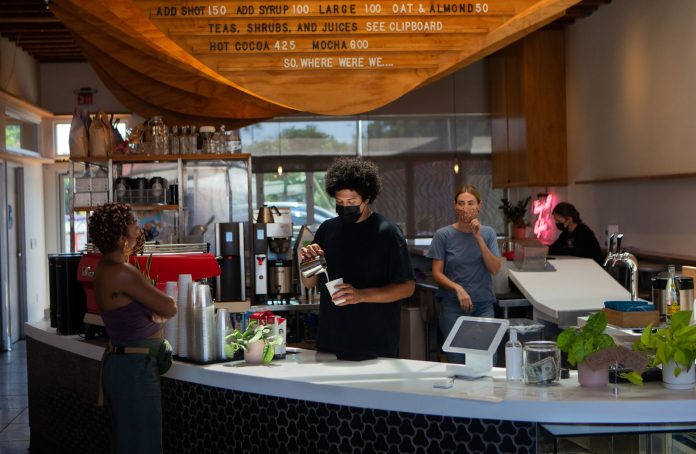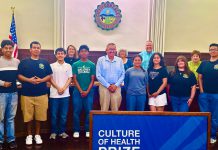
The delta variant is really throwing a wrench into our vaccinated summer.
The super contagious strain of the coronavirus is spreading rapidly, leading, once again, to a rise in COVID-19 hospitalizations and deaths, prompting leaders to reverse course on guidance that if you’re inoculated, you can go almost anywhere without a face covering.
On Tuesday, federal health authorities recommended that in many places, both vaccinated and unvaccinated people should wear masks when they’re in indoor public settings, although just two months ago, they said that inoculated Americans didn’t need to.
Time and again, experts have said that vaccines are the most important protection. If you’ve been vaccinated and you are infected, they have said, you are unlikely to get seriously sick.
But while a relatively high share of Californians have gotten their shots, the number of cases among the state’s unvaccinated is surging.
Speaking in Fresno on Tuesday, Gov. Gavin Newsom said that the state was working closely with the Centers for Disease Control and Prevention.
He also implored residents to get vaccinated — a call he has repeated over many months, including with a lottery wheel and gold lamé by his side.
“I’m never going to give up,” he said, this time standing alongside Fresno’s Republican mayor, Jerry Dyer. “We’re going to meet people where they are. We’re not by any stretch throwing our hands up.”
In any case, guidance about when and where Californians have to mask up has changed since the state’s grand reopening June 15, as have rules about who must be vaccinated in order to return to work without being tested regularly. Here’s what to know:
Where will vaccines be mandatory?
In California, a growing number of public employers — including the state and a handful of cities, like San Francisco, Long Beach and Los Angeles — are requiring employees to either prove that they have been vaccinated or get tested regularly.
Statewide, health care workers are also required to be vaccinated or tested. (And yes, your employer can require you to be vaccinated.)
On Tuesday, leaders of the California State University, the nation’s largest four-year public university system, announced they would follow the University of California in requiring students, staff and faculty to be vaccinated before coming to campus.
Also, more and more bars and restaurants across the state have begun requiring patrons who want to go inside to show proof they have been vaccinated or provide negative test results.
This week, a San Francisco bar industry group formally recommended that step.
“Look, this is what we need to do to protect our staff and families,” Ben Bleiman, president of the San Francisco Bar Owner Alliance and the owner of Soda Popinksi’s and Teeth bars, told Eater San Francisco. “The data doesn’t lie.”
When and where should I wear a mask?
According to the new CDC guidelines, vaccinated people need to wear masks only in regions where transmission rates are “high or substantial,” which means 50 new infections per 100,000 residents over the previous seven days, or where more than 8% of tests are positive for infection over that period.
According to CalMatters, that’s 45 of California’s 58 counties, where 96% of the state’s population lives.
So, if you want to err on the side of caution — which experts have advised, given transmission across the country — you may want to mask up when you go inside a store, movie theater or church. (The CDC urged anybody at a school to wear a mask, regardless of transmission rates in the surrounding area, so ditto that if you’re a teacher, student or school parent.)
You’ll recall that Los Angeles County officials have gone a step further and mandated masks in all indoor public settings. On Tuesday, Yolo County public health leaders announced they would follow suit, effective Friday.
What is the state doing to encourage more people to get vaccinated?
In short, officials are trying a lot.
The state is spending $40 million to work with primary care and small family doctors to help them encourage patients, who may be more likely to trust them, to get vaccinated, Newsom said Tuesday. Almost 500 community organizations are talking with people who are hesitant. There has been phone banking and state partnerships with barber shops, faith institutions and hundreds of ethnic media outlets.
This article originally appeared in The New York Times.
Copyright 2021 The New York Times Company













